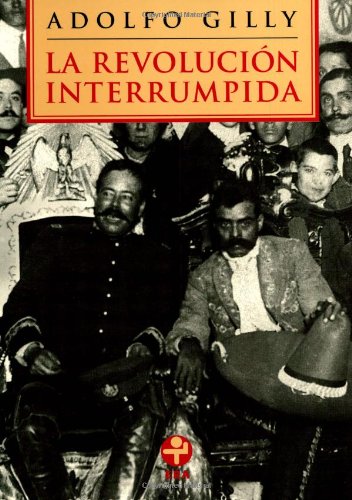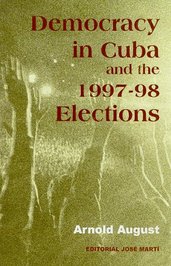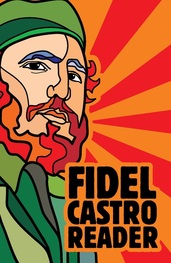During the period 1961-64, US policymakers found that US support of the government of South Vietnam was not leading to the intended results of political stability and government control of its territory. They increasingly became aware that the government was politically unstable, characterized by internal conflict and corruption. As a result, they concluded by 1965 that South Vietnam could not fulfill, at least with the existing level of military assistance, US political objectives in South Vietnam, which they defined as the containment of communism (McNamara 1996: 41-42, 111-12, 151, 154, 186).
As US policymakers reflected on possible courses of action in early 1965, their decision making was shaped by the Cold War ideology, as we will explore further in subsequent posts. Because of their anti-communist orientation, withdrawal was not an acceptable option. At the same time, anti-communist ideology prevented them from seeing that the root of the problem was the puppet character of the South Vietnamese regime. US policymakers thus arrived at an erroneous conclusion: that the South Vietnamese government could be strengthened by increasing US support. They reasoned that the United States, in limiting its support to military advisors, was signaling a lack of commitment to the government of South Vietnam. So US policymakers began to believe that US armed intervention with ground troops would increase the credibility and political strength of the government of South Vietnam, thus enabling it to more effectively carry out the pacification program and to assume the role assigned by US policy (McNamara 1996:157-58, 166-67, 170).
Thus, from January to July of 1965, US policymakers moved toward a decision to escalate the war, to send a greater number of US troops who would now engage in direct combat, and to launch air attacks against North Vietnam. Whereas in the beginning of 1965 there were 23,000 US military advisers stationed in Vietnam, US military presence increased to 180,000 troops by the end of 1965 and to 280,000 by the end of 1966. The South Vietnamese army also was expanded, increasing from 265,000 at the end of 1964 to 750,000 in 1966. US troops would number 550,000 by 1968 (García Oliveras 2010:127; McNamara 1996:142; 169-206, 321).
But the belief of US policymakers that more US military support would politically strengthen the government of South Vietnam was not correct. In fact, increased US military presence further undermined the legitimacy of the South Vietnamese government, in that it completely de-legitimated its claim to represent an independent nationalist force in Vietnam. As Julio García Oliveras, chief of the Cuban Military Mission in Indochina from 1966 to 1969, writes: “The introduction of US forces produced a great change in the south. Before the puppets could speak of nationalism, now it was made evident before the public that it was a question of an occupation by foreign troops” (García Oliveras 2010:134). “In political terms, the inferiority of the United States was absolute. The rapid increase of the number of puppet troops from 350,000 in 1961 to a half million in 1964 could not compensate for the intrinsic weakness of a mercenary army that had to combat under foreign command against their own compatriots” (García Oliveras 2010:158).
The intrinsic political weakness of the South Vietnamese government and the de-legitimation of its army had consequences:
“Desertions became more and more frequent as the war intensified. The puppet soldiers surrendered arms and provided information to the forces of liberation, and in many attacks against fortified posts, their complicity aided the patriots extraordinarily. Gradually nationalist sentiments grew among the troops of Saigon, and an increasing quantity of soldiers went over to the ranks of the liberation army. In this form, the puppet army was supplying men and arms to the popular forces” (García Oliveras 2010:158-59).
US casualties reached 100,000 (including dead and wounded) by April 1967, and this became an important factor in public opposition to the war in the United States. Toward the end of 1967, the US military began to assume a defensive posture, protecting military bases and cities and initiating only small-scale operations. NLF control of the territory of South Vietnam was sufficiently consolidated to make possible the implementation of an agrarian reform program, in which two and one-half million hectares of land were distributed. On May 19, 1967, Secretary of Defense McNamara sent a memorandum to President Lyndon Johnson, describing a pessimistic political and military situation from the US point of view. In an analysis of the war in September 1967, General Van Tieng Dung, Chief of General Staff of the Democratic Republic of Vietnam, expressed the view that the war in the South had been won (García Oliveras 2010:208-17; Prina 2008: 86; McNamara 1996:266-67, 321).
Nonetheless, General William C. Westmoreland, US field commander in Vietnam, and Ellsworth Bunker, US ambassador in Saigon, were optimistic. Westmoreland maintained that that the NLF was losing the war, for it had suffered losses on such a scale that it was not able to replace them with new combatants. Meanwhile, oriented to the 1968 elections, high officials in the Johnson administration were making public statements to the effect that the war was nearly won (García Oliveras 2010:223, 230).
The Tet Offensive, launched on January 30, 1968, exposed this false optimism. The NLF controlled 80% of the territory of the South, but the South Vietnamese regime controlled the cities. The Tet offensive was the beginning of a new stage that sought to provoke the fall of the puppet government and the withdrawal of US and other foreign troops. The offensive was multi-dimensional, including attacks on the cities and urban areas, demonstrating the vulnerability of the South Vietnamese regime in areas under its control; attacks on logistical bases and the destruction of supplies; and the cutting of transportation routes from the cities and bases, seeking to put a definitive end to the program of pacification. During the Tet Offensive, the six most important cities of the south were attacked: Saigon, Hue, Danang, Dalat, Nha Trang, and Qui Nhon. The assault on Saigon included dramatic attacks on the strongly-fortified US embassy and the Presidential Palace. In Hue, the imperial capital, NLF troops occupied and controlled the city for 25 days. In addition, 40 of 44 provincial capitals and 70 district centers were attacked (García Oliveras 2010:223-29; Ho 2007:211).
In June 1968, Westmoreland made a request to supplement the 500,000 US troops with an additional 200,000 troops. But the request was not approved. The Tet offensive had been the death blow for US presence in Vietnam. Johnson announced that he would not seek re-election, and that the United States agreed to peace negotiations (García Oliveras 2010:218, 230; McNamara 1996:315; Bello 2007:xxxvi).
In addition to the “search and destroy” strategy of US troops during the escalation of 1965-68, the United States also engaged in extensive bombing of North Vietnam. During the three-year bombing campaign, more bombs were dropped on both North and South Vietnam than on all of Europe during World War II (García Oliveras 2010:189, 194-96; McNamara 1996:174, 243). García Oliveras, head of the Cuban military mission in Indochina from 1966 to 1969, writes:
“As a result of the barbarous war of destruction carried out by the United States with its air attacks between 1965 and 1968 against the Democratic Republic of Vietnam, the statistics showed the following results: all the cities in the six most important provinces were bombed, three completely destroyed. Because of international considerations, the center of Hanoi was less affected, but the suburbs as well as other cities had to be nearly totally reconstructed. Twenty-nine provincial centers were bombed (12 destroyed); ninety-six of 116 district centers were bombed, 51 of them destroyed; 4,000 villages and hamlets were bombed, two-thirds of them in the northern region of the country, with 300 destroyed” (García Oliveras 2010:196-97).
US Secretary of Defense Robert McNamara explains that the purpose of the bombing was to break the will of North Vietnam to support the insurgency in the South and to reduce the ability of North Vietnam to supply men and materiel to the South. However, during the course of the air campaign, McNamara arrived at the conclusion that no amount of bombing of the North, short of total annihilation, which no one proposed, could accomplish these objectives (McNamara 1996:114, 118, 152, 162, 203-4, 210-11, 244-45, 286-89, 291-92).
McNamara reports that there were doubts concerning the effectiveness of the bombing from the beginning. However, since no better alternative appeared, most high military and civilian officials in the US government were inclined to initiate air attacks (McNamara 1996:114). McNamara’s summary of a 1964 CIA report shows the prevailing doubts:
“[The CIA report] echoed the [military] chiefs’ view that North Vietnam’s transportation system and industrial base lay vulnerable to aerial attack. But the CIA went on to stress that because North Vietnam’s economy was overwhelmingly agricultural and largely decentralized in a myriad of villages that were essentially self-sustaining, bombing would neither create insurmountable economic problems nor inhibit Hanoi’s ability to supply enough men and materiel to continue the guerrilla war in the South. The CIA also observed that North Vietnam’s leaders saw the collapse of the Saigon government—and victory—as quite near. Therefore, they would likely endure substantial bombing without changing course” (1996:162).
“The air war intensified. Sorties against North Vietnam grew from 25,000 in 1965 to 79,000 in 1966 to 108,000 in 1967, and the tonnage of bombs dropped rose from 63,000 to 136,000 to 226,000. . . . In the end, bombing did not achieve its basic goals: as [the bombing] intensified, US intelligence estimated that infiltration increased from about 35,000 men in 1965 to as many as 90,000 in 1967, while Hanoi’s will to carry on the fight stayed firm” (1996:244).
After 1968, the United States government was on the defensive before growing opposition to the war in US and world public opinion. Richard Nixon, who had assumed the presidency in 1969, announced a policy of “Vietnamization,” in which the United States would gradually withdraw troops but would maintain economic and military support to the government of South Vietnam. Peace talks were initiated, but they made little progress. In 1970, the US invaded Laos and Cambodia, seeking to eliminate supply routes to the NLF, and it resumed bombing of North Vietnam. These military actions provoked a new wave of massive student anti-war demonstrations in the United States. In reaction to the continuous bombings, North Vietnam launched in 1972 an invasion of a part of South Vietnam. In response, the US suspended peace talks and increased air attacks. The city of Hanoi was severely damaged by the bombs, which were more massive than at any previous point. In 1973, peace talks resumed, with delegations from the United States, the government of South Vietnam, the Provisional Revolutionary Government of South Vietnam (which had been established in 1969 and was under the control of the NLF), and the Democratic Republic of Vietnam. The four parties signed a peace accord that ended the war and mandated total US withdrawal, which was carried out by March of 1973 (Prina 2008:32-35, 137; Bello 2007:xxxvi).
The final triumph of the Vietnamese revolution occurred as a result of the Great Spring Offensive of 1975. The North Vietnamese army, commanded by General Tran Van Tra, and the NLF launched an offensive, rapidly taking control of the important cities of the South, including Hue and Saigon. Officials of the government of South Vietnam resigned, and political power was assumed jointly by a Military Revolutionary Committee of North Vietnam and the Provisional Revolutionary Government of South Vietnam, directed by the NLF. A constitutional assembly was held, and a unified nation, the Socialist Republic of Vietnam, was established, with Hanoi as the capital city. The name of the city of Saigon was changed to Ho Chi Minh City (Prina 2008:35; García Oliveras 2010:231).
Thus ended the stage of struggle characterized by thirty years of tragically destructive wars with two colonial powers. A new stage of struggle would now begin that would have challenges of a different order. The new stage involved the reconstruction of a war-torn nation on a socialist foundation, a project undertaken as the neocolonial world system was about to enter its neoliberal stage. Having overcome military aggression through armed struggle, socialist Vietnam and the Vietnamese people, like the rest of the neocolonized nations and peoples of the world, would now have to contend with the economic aggressions of the global powers in the context of a neocolonial world-system. Socialist Vietnam today is cooperating with other autonomous nations that are seeking to construct a more just and democratic world-system.
Bello, Walden. 2007. “Introduction: Ho Chi Minh: The Communist as Nationalist” in Ho Chi Minh, Down with Colonialism. London: Verso.
García Oliveras, Julio A. 2010. Ho Chi Minh El Patriota: 60 años de lucha revolucionaria. La Habana: Editorial de Ciencias Sociales.
Ho Chi Minh. 2007. Down with Colonialism. Introduction by Walden Bello. London: Verso.
McNamara, Robert S., with Brian VanDeMark. 1996. In Retrospect: The Tragedy and Lessons of Vietnam. New York: Random House, Vintage Books.
Prina, Agustín. 2008. La Guerra de Vietnam. Mexico: Ocean Sur.
Key words: Third World, revolution, colonialism, neocolonialism, imperialism, democracy, national liberation, sovereignty, self-determination, socialism, Marxism, Leninism, Cuba, Latin America, world-system, world-economy, development, underdevelopment, colonial, neocolonial, blog Third World perspective, Vietnam War

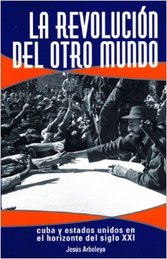
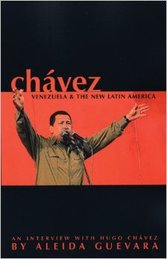
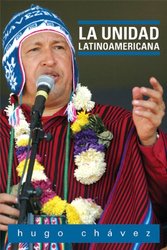

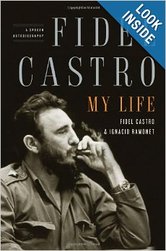
 RSS Feed
RSS Feed
